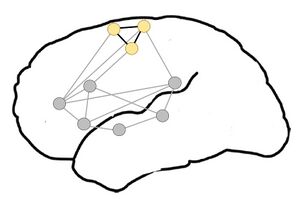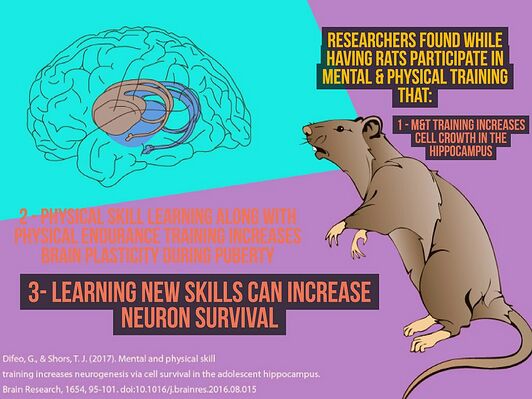Neuroplasticity After Stroke: Difference between revisions
No edit summary |
Candace Goh (talk | contribs) mNo edit summary |
||
| Line 13: | Line 13: | ||
* PA provides neuroprotective effects capable of reducing adverse effects of brain ischemia, with prestroke physical fitness decreasing the severity of motor deficits.<ref name=":0">Pin-Barre C, Laurin J. [https://www.hindawi.com/journals/np/2015/608581/?utm_source=bing&utm_medium=cpc&utm_campaign=HDW_MRKT_GBL_SUB_BNGA_PAI_DYNA_JOUR_X_X0000_WileyFlipsBatch2&utm_term=Acta%20Neurologica%20Scandinavica&utm_content=JOUR_X_X0000_WileyFlipsBatch2_ActaNeurologicaScandinavica Physical exercise as a diagnostic, rehabilitation, and preventive tool: influence on neuroplasticity and motor recovery after stroke]. Neural plasticity. 2015 Oct;2015. Available:https://www.hindawi.com/journals/np/2015/608581/?utm_source=bing&utm_medium=cpc&utm_campaign=HDW_MRKT_GBL_SUB_BNGA_PAI_DYNA_JOUR_X_X0000_WileyFlipsBatch2&utm_term=Acta%20Neurologica%20Scandinavica&utm_content=JOUR_X_X0000_WileyFlipsBatch2_ActaNeurologicaScandinavica (accessed 1.1.2023)</ref> | * PA provides neuroprotective effects capable of reducing adverse effects of brain ischemia, with prestroke physical fitness decreasing the severity of motor deficits.<ref name=":0">Pin-Barre C, Laurin J. [https://www.hindawi.com/journals/np/2015/608581/?utm_source=bing&utm_medium=cpc&utm_campaign=HDW_MRKT_GBL_SUB_BNGA_PAI_DYNA_JOUR_X_X0000_WileyFlipsBatch2&utm_term=Acta%20Neurologica%20Scandinavica&utm_content=JOUR_X_X0000_WileyFlipsBatch2_ActaNeurologicaScandinavica Physical exercise as a diagnostic, rehabilitation, and preventive tool: influence on neuroplasticity and motor recovery after stroke]. Neural plasticity. 2015 Oct;2015. Available:https://www.hindawi.com/journals/np/2015/608581/?utm_source=bing&utm_medium=cpc&utm_campaign=HDW_MRKT_GBL_SUB_BNGA_PAI_DYNA_JOUR_X_X0000_WileyFlipsBatch2&utm_term=Acta%20Neurologica%20Scandinavica&utm_content=JOUR_X_X0000_WileyFlipsBatch2_ActaNeurologicaScandinavica (accessed 1.1.2023)</ref> | ||
* Stroke therapy combining physical training with pharmacological treatments, is known to promote neuroplasticity. <ref name=":0" /> | * Stroke therapy combining physical training with pharmacological treatments, is known to promote neuroplasticity. <ref name=":0" /> | ||
* Brain-derived neurotrophic factor (BDNF) is a key facilitator of neuroplasticity. Evidence suggests that aerobic exercise is an important intervention for improving brain function, these effects are mediated partly by upregulation of BDNF. As such aerobic | * Brain-derived neurotrophic factor (BDNF) is a key facilitator of neuroplasticity. Evidence suggests that aerobic exercise is an important intervention for improving brain function, these effects are mediated partly by upregulation of BDNF. As such [[Aerobic Exercise|aerobic exercise]]–induced increases in BDNF help facilitate motor learning-related neuroplasticity for rehabilitation after stroke.<ref>Mang CS, Campbell KL, Ross CJ, Boyd LA. [https://www.ncbi.nlm.nih.gov/pmc/articles/PMC3870490/ Promoting neuroplasticity for motor rehabilitation after stroke: considering the effects of aerobic exercise and genetic variation on brain-derived neurotrophic factor.] Physical therapy. 2013 Dec 1;93(12):1707-16.Available:https://www.ncbi.nlm.nih.gov/pmc/articles/PMC3870490/ (accessed 1.1.2023)</ref> | ||
[[File:M&P Training.jpeg|center|thumb|532x532px|Mental and Physical training increases neuroplasticity ]] | [[File:M&P Training.jpeg|center|thumb|532x532px|Mental and Physical training increases neuroplasticity ]] | ||
{{#ev:youtube|f1vIAyEhvaE}} | {{#ev:youtube|f1vIAyEhvaE}} | ||
Revision as of 14:56, 20 February 2023
Original Editor - Lucinda Hampton
Top Contributors - Lucinda hampton, Rahma Ahmed Ahmed Bahbah, Candace Goh and Tolulope Adeniji
Introduction[edit | edit source]
Following a stroke, the healthy areas of the brain around the damaged brain tissue region are able to compensate and develop new functions. Neuroplasticity is the term that describing this rewiring and reorganizing process. This process include: interhemispheric lateralization; association cortical regions making new connections in injured area; a re-organization of cortical representational maps. Brain plasticity leads to a great degree of spontaneous recovery, with stroke rehabilitation able to modify and boost this neuronal plasticity processes.[1]
Physical Activity And Neuroplasticity[edit | edit source]
Physical activity (PA) can promote neural plasticity.
- PA effects in the peri-infarct site (post stroke): promotes cerebral angiogenesis, vasomotor reactivity, neurotrophic factor release; reduces apoptosis processes, excitotoxicity, and inflammation.
- PA provides neuroprotective effects capable of reducing adverse effects of brain ischemia, with prestroke physical fitness decreasing the severity of motor deficits.[2]
- Stroke therapy combining physical training with pharmacological treatments, is known to promote neuroplasticity. [2]
- Brain-derived neurotrophic factor (BDNF) is a key facilitator of neuroplasticity. Evidence suggests that aerobic exercise is an important intervention for improving brain function, these effects are mediated partly by upregulation of BDNF. As such aerobic exercise–induced increases in BDNF help facilitate motor learning-related neuroplasticity for rehabilitation after stroke.[3]
Physiotherapy[edit | edit source]
Utilising the brains' ability to create and lay down new pathways the physiotherapist can play a big role in rehabilitation and improved quality of life. Physical therapy can positively promote neuroplasticity during stroke rehabilitation, approaches include:
- Constraint induced movement therapy (CIMT) for the arm and hand
- Task-oriented therapy and repetition of novel movements
- Gait training
- Aerobic exercises
- Dual-task training, involving Motor Dual-Task Training and Cognitive Dual-Task Training
- Vitual Reality
- Mental Imagery
See also Stroke: The Evidence for Physiotherapy
References[edit | edit source]
- ↑ Hara Y. Brain plasticity and rehabilitation in stroke patients. Journal of Nippon Medical School. 2015 Feb 15;82(1):4-13. Available: https://www.jstage.jst.go.jp/article/jnms/82/1/82_4/_article(accessed 1.1.2023)
- ↑ 2.0 2.1 Pin-Barre C, Laurin J. Physical exercise as a diagnostic, rehabilitation, and preventive tool: influence on neuroplasticity and motor recovery after stroke. Neural plasticity. 2015 Oct;2015. Available:https://www.hindawi.com/journals/np/2015/608581/?utm_source=bing&utm_medium=cpc&utm_campaign=HDW_MRKT_GBL_SUB_BNGA_PAI_DYNA_JOUR_X_X0000_WileyFlipsBatch2&utm_term=Acta%20Neurologica%20Scandinavica&utm_content=JOUR_X_X0000_WileyFlipsBatch2_ActaNeurologicaScandinavica (accessed 1.1.2023)
- ↑ Mang CS, Campbell KL, Ross CJ, Boyd LA. Promoting neuroplasticity for motor rehabilitation after stroke: considering the effects of aerobic exercise and genetic variation on brain-derived neurotrophic factor. Physical therapy. 2013 Dec 1;93(12):1707-16.Available:https://www.ncbi.nlm.nih.gov/pmc/articles/PMC3870490/ (accessed 1.1.2023)








